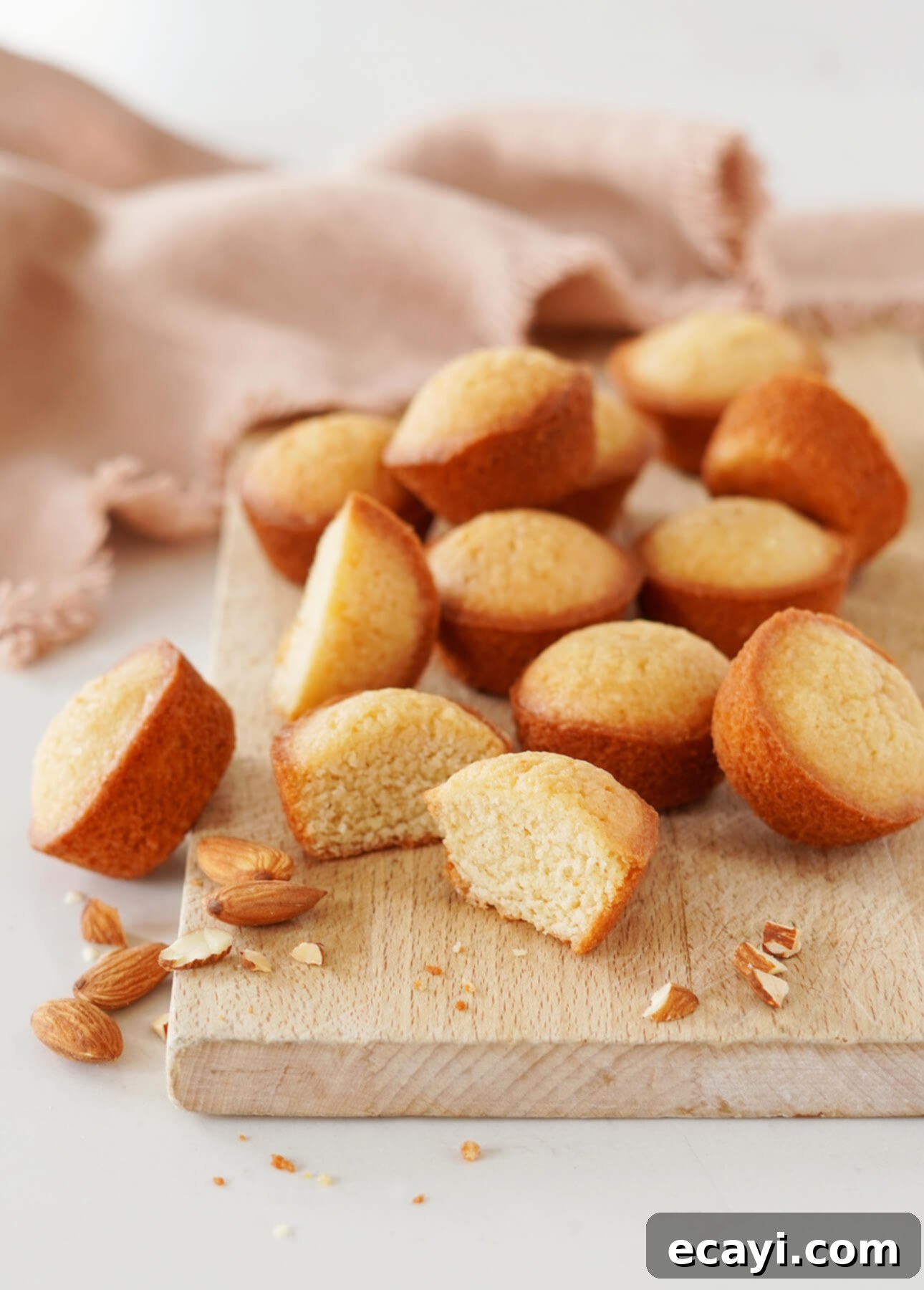Mastering Classic French Financiers: The Ultimate Guide to Elegant Almond Tea Cakes
Everything you need to know about French financiers, the elegant tiny cakes you can serve for tea or dessert, or make as a delicious edible gift. Discover easy techniques, essential tips, and a myriad of flavor variation ideas!
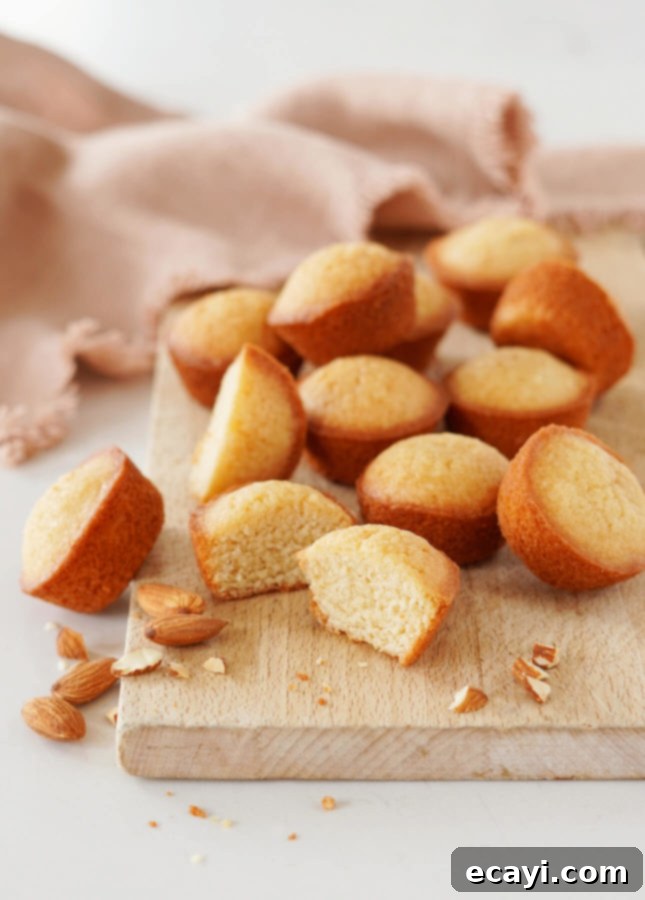
This post contains affiliate links. Full disclosure is at the bottom of the article.
French financiers have undeniably secured a top spot on my list of favorite go-to desserts. My affection for these delightful almond cakes stems from several key qualities: despite their sophisticated name and refined appearance, they are remarkably easy to prepare. Seriously, if you can master a basic muffin, you can absolutely conquer financiers! Their incredible versatility is another huge draw; you can craft them with virtually any type of nut and adorn them with a wide array of toppings, from fresh or roasted fruits to dried fruits, vibrant citrus zest, or even decadent chocolate chips.
What makes financiers truly revolutionary for home bakers is the ability to prepare the batter in advance. This means you can keep a batch of batter in your fridge for several days, ready to be baked on a whim. This convenience transforms French financiers into the ultimate stress-free dessert, allowing you to enjoy freshly baked treats whenever the craving strikes.
While I’ve previously shared numerous financier recipes, I realized I had yet to offer a comprehensive deep dive into the classic French financier. This in-depth guide consolidates all my expert tips and tricks for creating these exquisite, bite-sized French cakes from scratch, ensuring perfect results every time.
What Exactly Are French Financiers?
Financiers are opulent, miniature cakes distinguished by their rich texture and distinctive nutty flavor. They are primarily crafted from almond flour, clarified brown butter (known as beurre noisette in French), and whipped egg whites. Traditionally, these elegant treats are baked in small, rectangular molds, a shape that famously resembles miniature gold bars. This iconic presentation is actually what bestowed the name “financier” upon the mignardise, referencing the wealthy bankers of Paris. Beyond their classic rectangular form, financiers are also frequently baked in round molds, such as those found in a mini-muffin pan, offering a more common and accessible baking method for many home cooks. Their unique combination of ingredients results in a cake that is moist and tender on the inside with a delicate, slightly crisp exterior, making them an unparalleled culinary delight.
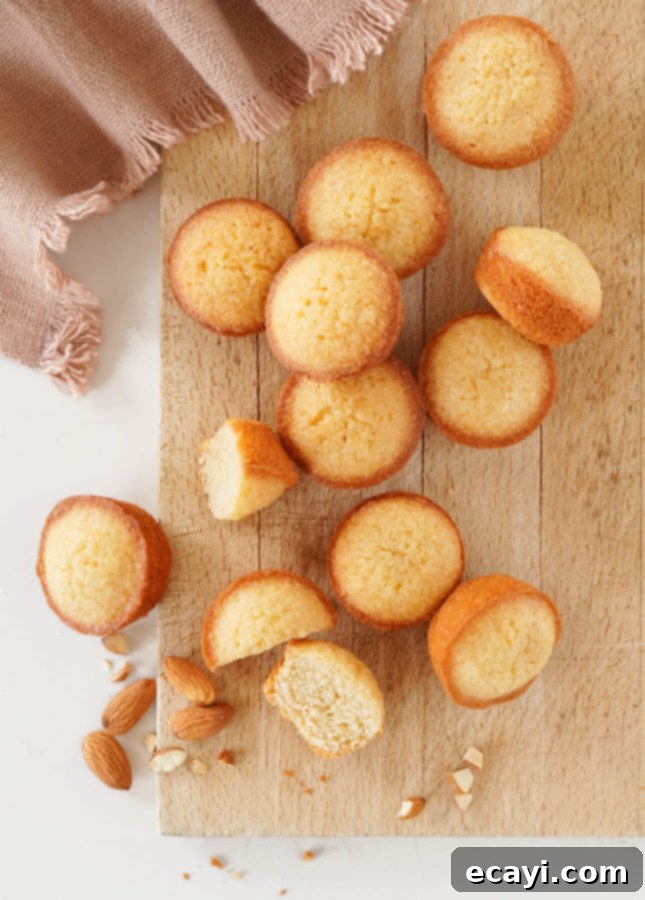
Do You Need a Special Financier Pan?
As mentioned, French financiers are traditionally baked in small, rectangular molds, which impart their signature gold bar appearance. This classic shape is indeed a nod to their namesake. However, if you don’t own a specific financier pan, rest assured: you absolutely do not need one to create delicious French financiers. I would never want the lack of a particular pan to deter you from enjoying this exquisite treat! In fact, even though I possess a dedicated financier pan, I rarely use it myself. I find much greater convenience and equally satisfying results using standard muffin pans or mini-muffin pans, which are far more common in most home kitchens.
When opting for muffin pans, I highly recommend lining the cups with parchment paper liners. These are readily available in both regular and mini sizes. Unless your muffin pans are brand new and boast exceptional non-stick properties, lining the cups is a crucial step. Financier batter is notably sticky, and even a thoroughly buttered pan can still lead to frustrating sticking. Using parchment paper liners is a simple, effective way to ensure easy and effortless unmolding, preserving the beautiful shape of your financiers and saving you considerable cleanup time.
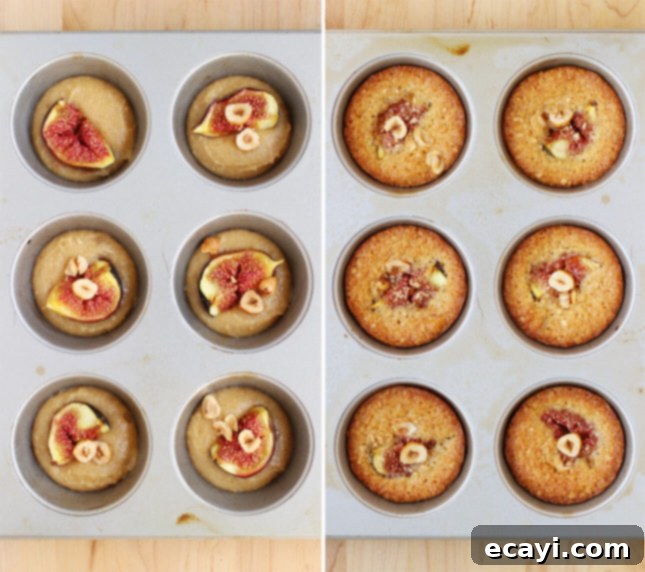
Essential Ingredients for French Financiers
One of the beauties of French financiers is that they are crafted from a handful of staple ingredients, many of which you likely already have in your pantry. These core components, when combined with specific techniques, create their unique flavor and texture:
- Toasted Nuts: Typically almond flour, but other nuts can be used. These provide the characteristic nutty flavor and moist crumb.
- All-Purpose Flour: Provides structure to the cakes.
- Sugar: A blend of granulated and brown sugar often yields the best results.
- Baking Powder: A leavening agent that helps the financiers rise slightly, contributing to their light texture.
- Butter: The star ingredient, ideally browned, for its profound flavor.
- Egg Whites: Give financiers their light, airy structure without the richness of yolks.
The most distinctive financier ingredient, and one that warrants careful consideration, is the choice and preparation of nuts. You have two primary options for sourcing: either purchase nut flour (which consists of finely ground nuts) or buy whole nuts and grind them yourself (instructions for which are provided below).
Almond flour is the most widely available nut flour, but you can also commonly find pecan flour and hazelnut flour. Generally, pre-ground nut flours tend to be more expensive than whole nuts. Both can be more affordable when purchased in bulk. It is crucial to always store nuts—whether whole or ground—in an airtight container and refrigerate them. Nuts can quickly turn rancid at room temperature, and given their cost, proper storage prevents waste. Avoid storing nuts in the freezer, as the harsh freezing and thawing conditions of a typical home freezer can degrade their delicate oils and flavor.
If you opt for raw whole nuts, it’s highly recommended to toast them before grinding for financiers. This simple step significantly enhances their flavor, bringing out a deeper, more aromatic profile. Refer to my detailed tips for roasting nuts further down in this article.
Choosing the Right Sugar for Financiers
Traditionally, classic French financiers are made with powdered sugar (also known as confectioners’ sugar). While this yields a delicate crumb, I’ve found that a blend of granulated sugar and brown sugar offers the optimal balance of texture and flavor for financiers. This combination contributes to a slightly chewier interior and a richer, more complex sweetness that beautifully complements the nutty brown butter. For those looking to experiment with different flavor profiles, you can easily substitute the granulated sugar with an equal amount of cane sugar for a slightly cleaner taste, or granulated maple sugar to introduce subtle, caramel-like notes that pair wonderfully with the other ingredients.
A Step-by-Step Guide to Toasting Nuts
Toasting nuts is a simple yet powerful technique that significantly deepens their flavor, adding an aromatic dimension to your financiers. Here’s how to do it perfectly:
- Preheat your oven to 325°F (160°C).
- Spread the nuts evenly in a single layer over a baking sheet. Avoid overcrowding the pan, as this can steam the nuts instead of toasting them.
- Bake for 8 to 12 minutes. Halfway through the baking time, give the baking sheet a gentle shake to ensure even toasting.
- Crucially, keep a very close eye on the nuts while they are roasting to prevent them from burning. Nuts can go from perfectly toasted to burnt very quickly.
Pistachios are generally the most delicate nuts, requiring the least amount of time to toast, usually around 8 minutes. Sturdier nuts like almonds and walnuts will typically need a bit longer, closer to 12 minutes, to develop their full flavor.
You’ll know the nuts are ready when they begin to release their delightful, warm aroma. Trust your nose more than your eyes, as a significant change in color may not always be obvious, especially with darker nuts. Once toasted, allow the nuts to cool completely before storing them in an airtight container or incorporating them into your financier batter. This cooling step is essential for preserving their crispness and flavor.
Grinding Whole Nuts for Financiers
If you choose to use whole nuts instead of pre-ground nut flour, grinding them correctly is key to achieving the perfect financier texture. The easiest and most effective way to grind nuts into a fine flour without turning them into a paste is by using a food processor. Here’s how:
- Add the toasted (and cooled) whole nuts to your food processor bowl.
- Crucially, add the all-purpose flour from your recipe along with the nuts. The flour acts as a buffer, absorbing some of the oils released from the nuts and preventing them from clumping together and forming butter.
- Process the nuts and flour together in short bursts, pulsing rather than continuously running the machine. This technique allows for better control and ensures the nuts grind evenly into a fine, powdery consistency.
- During the process, scrape down the sides of the bowl once or twice with a spatula. This helps to catch any larger pieces and ensures that all the nuts are finely ground.
Continue processing until the mixture resembles a fine meal, similar to the consistency of almond flour. Avoid over-processing, as this can quickly turn the mixture into nut butter, which is not ideal for financiers.
The Magic of Brown Butter: Is It Truly Essential for Financiers?
One of the cornerstone flavor elements of classic French financiers is brown butter, affectionately known as beurre noisette (literally “hazelnut butter”) in French, a name derived from its rich, nutty aroma and golden-brown hue. Brown butter is created by gently melting and simmering butter until its water content evaporates and the milk solids toast to a beautiful caramel color. This process is surprisingly easy (see my detailed tips below) and results in an incredibly fragrant and complex flavor that truly elevates financiers, lending them a depth of taste that is both sophisticated and comforting.
However, if time is of the essence or you’re seeking a simpler approach, rest assured: you can absolutely skip the browning step and simply use melted butter. While the flavor profile will be slightly less complex, your financiers will still be delicious. In fact, I often choose to skip browning the butter when I’m incorporating other strong flavor components into my financiers, such as tart cranberries or bright lemon zest. The vibrant aromas of these ingredients can sometimes overshadow the delicate, nutty nuances of brown butter, making the extra step less impactful. In such cases, plain melted butter allows these complementary flavors to shine more prominently.
How to Make Perfect Brown Butter (Beurre Noisette)
Making brown butter is a deceptively simple technique that adds incredible depth and a delightful nutty aroma to any dish, especially financiers. Here’s how to achieve it:
- Prepare Your Pan: Dice the butter into even pieces. Place them in a small stainless steel saucepan. A stainless steel pan is highly recommended because its pale interior makes it much easier to observe the butter’s color change, which is crucial for preventing burning.
- Melt and Simmer: Set the saucepan over medium heat. Stir continuously until the butter is completely melted. Once melted, reduce the heat to medium-low and continue to simmer, swirling the pot gently from time to time.
- Watch for Bubbles: As the water in the butter evaporates, the butter will begin to bubble vigorously. This bubbling can sometimes obscure your view of the bottom of the pan, making it difficult to assess the color. To overcome this, periodically lift the saucepan off the heat and gently swirl it for a few seconds. The bubbles will recede, allowing you to clearly check if the milk solids at the bottom have started browning. If not, return it to the heat.
- Identify the “Hazelnut” Stage: Brown butter is ready when the milk solids resting at the bottom of the pot transform into a beautiful golden-brown color, and the entire concoction emits a wonderfully rich, nutty aroma, reminiscent of hazelnuts. This typically takes about 5 to 7 minutes in total.
- Cool Down: As soon as it reaches this stage, immediately remove the butter from the heat to prevent it from burning. Pour the brown butter into a small, heatproof bowl and allow it to cool completely before incorporating it into your financier batter. Cooling is essential as hot butter could cook the egg whites in the batter prematurely.


VIDEO: How to make brown butter
Learn how to make brown butter step by step. It’s an easier technique than you think and it brings a world of flavor to your dishes!
Can You Prepare French Financiers Ahead of Time?
Absolutely! In fact, French financiers are the quintessential make-ahead dessert, offering unparalleled convenience for entertainers and busy bakers alike. The prepared financier batter can be easily stirred together and then stored in an airtight container in the refrigerator for up to a full week. This flexibility allows you to bake just a few financiers at a time, ensuring you always have freshly baked treats on hand without the need for a last-minute scramble.
While financiers are undeniably delicious at any time, they are truly at their peak when freshly baked, or ideally, consumed within 48 hours. One of the greatest pleasures of a freshly baked financier is the delightful textural contrast: crisp, golden-brown edges giving way to a wonderfully moist and buttery-rich interior. After about 24 hours of storage in an airtight container, this distinct textural contrast mellows, and the financiers tend to become more uniformly tender throughout. While they remain incredibly flavorful and enjoyable, that initial perfect crunch softens. The ability to refrigerate the batter for several days is a game-changer, allowing you to bake small batches as needed and always savor financiers at their freshest and most exquisite.
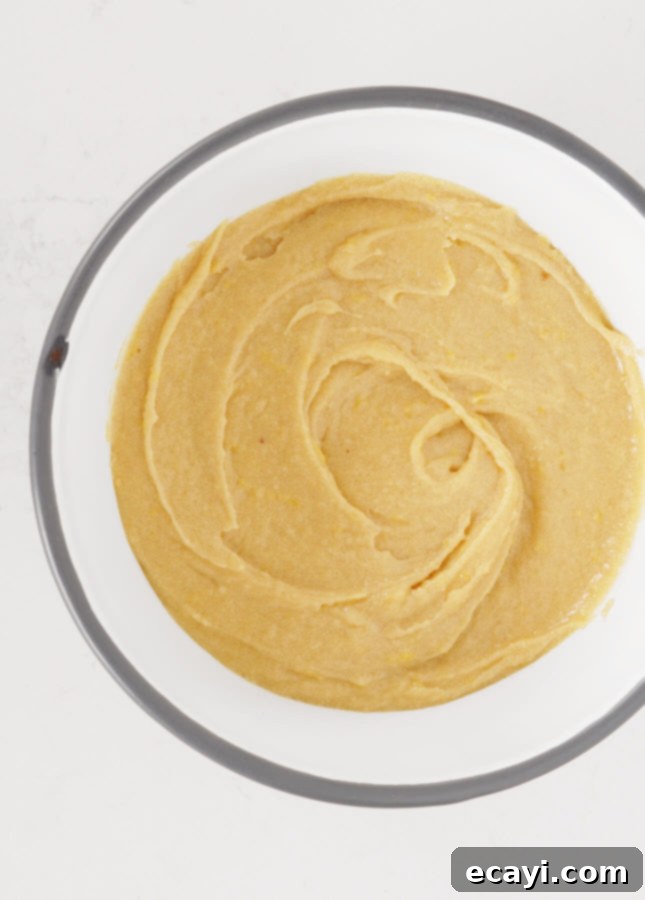
Freezing and Reheating French Financiers
French financiers can indeed be frozen, offering another fantastic option for advance preparation and enjoying these delightful cakes over a longer period. However, it’s worth noting that the freezing and thawing process can slightly alter the texture, potentially making the financiers a bit softer than their freshly baked counterparts. To minimize this effect and maintain their quality, follow these guidelines:
- Freezing Baked Financiers: If you bake a batch of financiers in advance and wish to freeze them, ensure they are completely cooled before packaging. Store them in heavy-duty freezer bags or an airtight freezer-safe container to protect them from freezer burn. For best results and flavor, consume them within a maximum of 1 month.
- Thawing: To thaw frozen financiers, you have a couple of options: transfer them to the refrigerator overnight, allowing them to gently come to temperature, or leave them at room temperature for approximately 30 minutes for a quicker thaw.
- Reheating for Freshness: To revive the thawed financiers and bring them back to a texture remarkably close to freshly baked, reheat them in a preheated 325°F (160°C) oven for 6 to 8 minutes. This brief warming period helps to crisp up the edges and warm the interior. After reheating, let them cool to room temperature before serving to fully enjoy their re-invigorated texture and flavor.
Creative Ingredient Substitutions and Flavor Enhancements for French Financiers
While the classic brown butter French financier is a perfectly exquisite bite on its own, its simple base recipe makes it incredibly adaptable for culinary exploration. You can easily switch things up and infuse your financiers with a diverse range of flavors and textures.
Nut Substitutions: The almond flour in the classic recipe can be swapped with any other ground nut at a 1:1 ratio. Experimenting with different nuts unlocks a whole new world of flavors. Hazelnuts, pecans, pistachios, and walnuts all create exceptionally flavorful financiers, each lending its own unique character and richness to the cake.
Citrus Zest for Brightness: Introducing a generous amount of grated lemon or orange zest is a simple yet effective way to add a vibrant layer of flavor to your financier batter. Before zesting, ensure you carefully scrub the citrus fruits, and ideally, use unsprayed, organic varieties. For the finest zest and maximum flavor extraction, use a Microplane. Add about 2 tablespoons (30 ml) of finely grated citrus zest to the batter – this typically equates to the zest from two lemons or one large orange – for a wonderfully aromatic and zesty financier.
Get Creative with Toppings: Financiers are an ideal canvas for a nearly infinite array of toppings, allowing you to produce remarkably diverse results from a single batch of batter. For instance, you could prepare a classic French financier batter, scoop it into your prepared muffin cups, and then top different portions with three or four distinct fruits. Imagine a stunning assortment featuring fresh raspberries, plump blueberries, and sweet cherries, all from one batch, effortlessly creating a beautiful and varied display of treats without any extra fuss. Other fantastic topping ideas include mini chocolate chips, thinly sliced nuts, or even a sprinkle of sea salt after baking for a sweet and salty contrast.
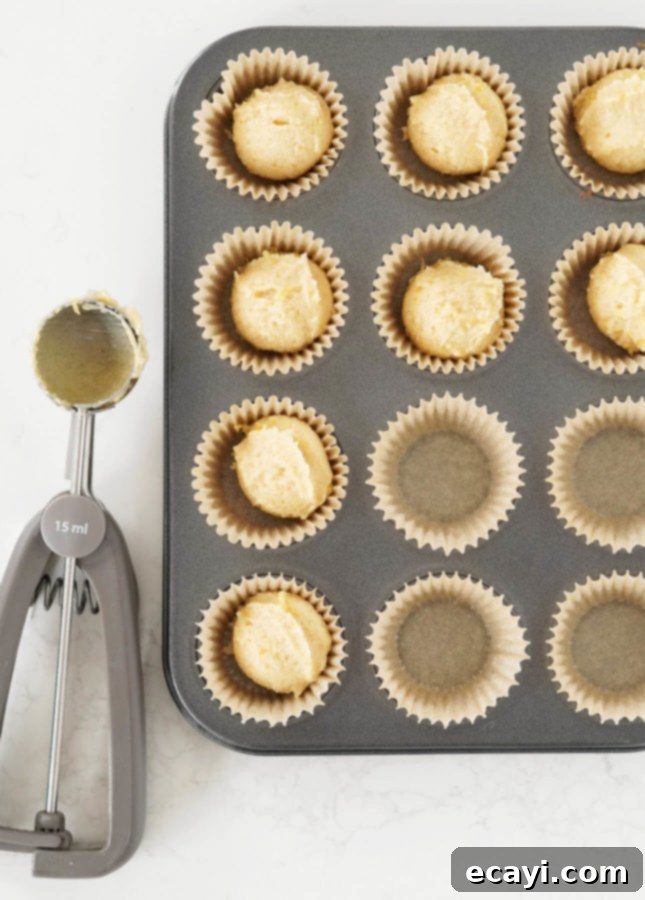
Inspiring Flavor Variations for French Financiers
Once you’ve mastered the technique of making the classic financier batter, your culinary imagination can truly take flight! The versatility of financiers means you can pair virtually any nut with any fruit, creating endless delicious combinations. During the festive holiday season, I even love transforming these elegant treats into a breathtaking financier cake, perfect for sharing.
Let these perfect flavor combinations inspire your next baking adventure with French financiers:
- Almond and apricots
- Almond and cranberries
- Almond and plums
- Hazelnut and blueberries
- Hazelnut and cherries
- Hazelnut and figs
- Hazelnut and chocolate chips
- Pecan and apricots
- Pecan and peaches
- Pecan and raspberries
- Pistachio and lemon zest
- Pistachio and peaches
- Pistachio and raspberries
- Walnut and caramelized apples
- Walnut and chocolate chips
- Walnut and orange zest
If you’re ready to tackle a larger-format financier, be sure to explore my dedicated recipe for Black Sesame and Chocolate Financier Cake. This recipe provides invaluable advice on pan choices, baking times, and extra tips specifically tailored to create a stunning financier cake that remains wonderfully moist and flavorful for days, making it an impressive centerpiece for any special occasion.
More Delicious Financier Recipes to Explore
My love for financiers runs deep, and I’ve developed a variety of recipes that showcase their incredible versatility. If you’re eager to try more variations beyond the classic, here are links to other exciting financier recipes available on my blog:
- Maple Financiers
- Wild Blueberry Financiers
- Maple-Roasted Fig and Hazelnut Financiers
- Fresh Cranberry and Hazelnut Financiers
- Black Sesame and Chocolate Financier Cake
Beyond the blog, I’ve also shared creative and unique French financier recipes in my cookbooks, Simply Citrus and French Appetizers, offering even more inspiration for your baking endeavors.
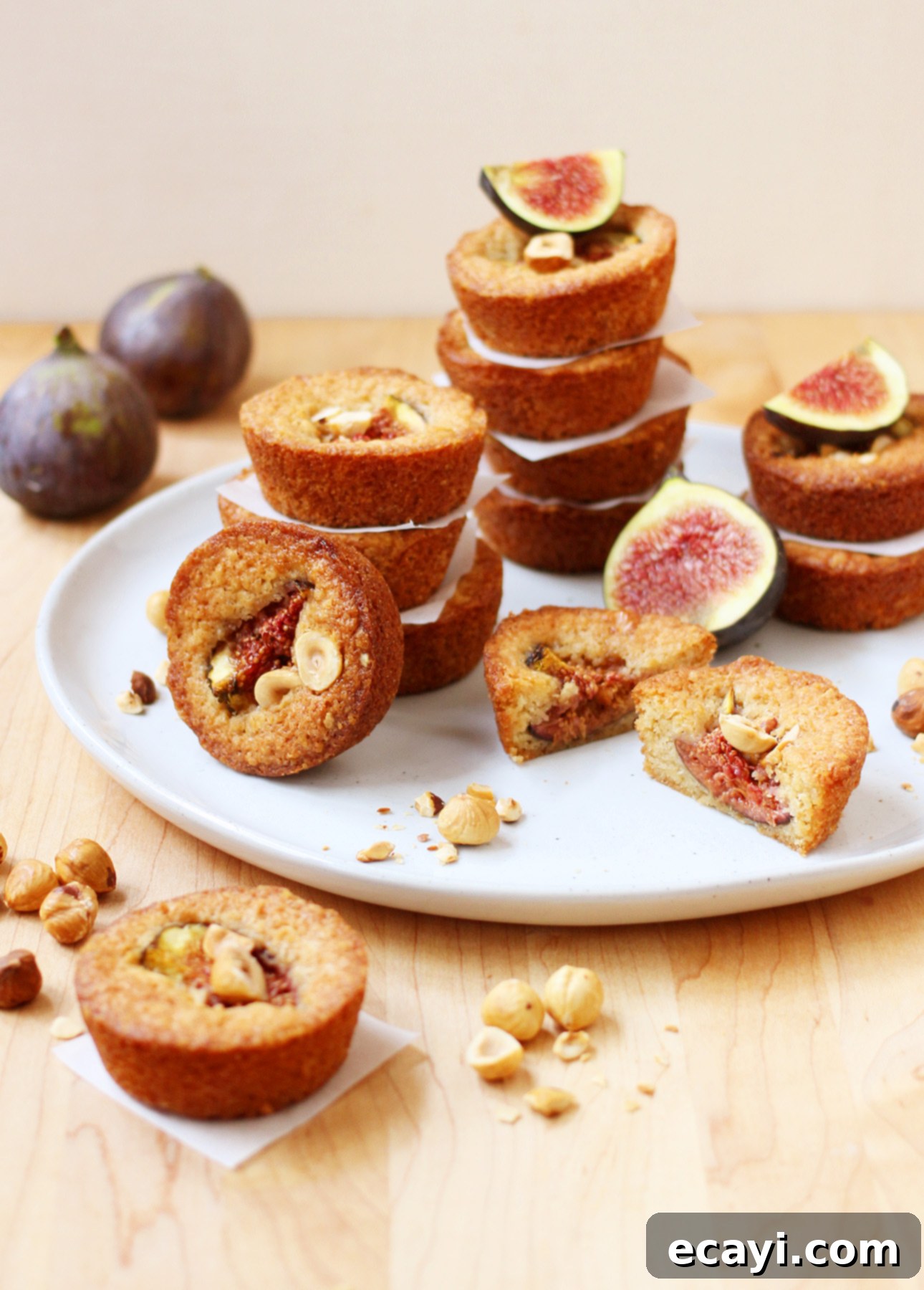
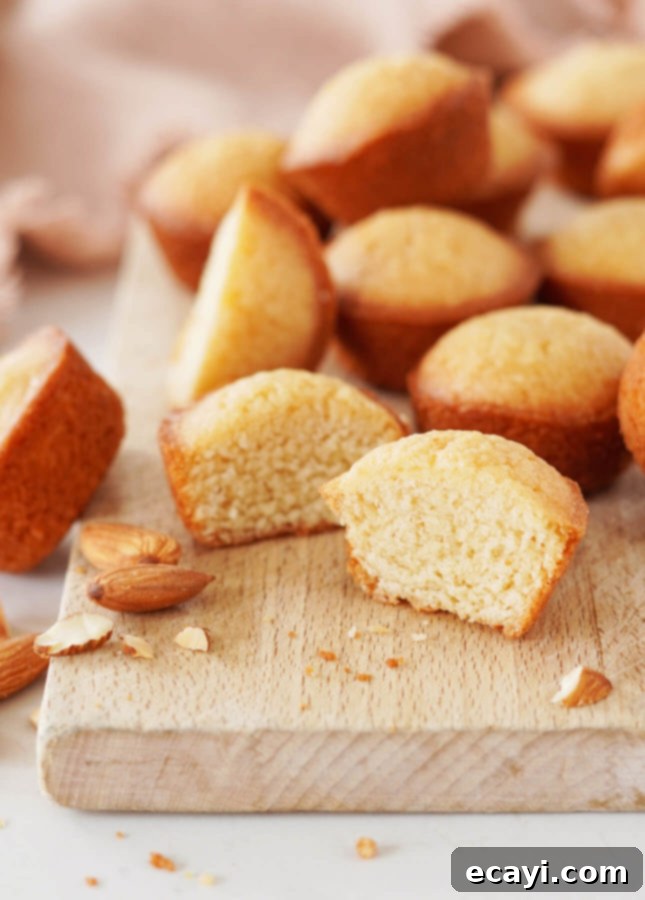
Pin Recipe
Classic French Financiers Recipe
Ingredients
For the French financiers
- ½ cup butter
- 1 cup almond flour
- ½ cup all-purpose flour
- ½ cup granulated sugar
- ½ cup brown sugar, packed
- ½ tsp baking powder
- 4 large egg whites 120 g
Flavoring options (choose one!)
- 2 tbsp finely grated lemon zest (about 2 lemons)
- 1 tbsp finely grated orange zest (about 1 orange)
- 1 tbsp pure vanilla extract, or 1 tsp (5 ml) vanilla bean paste, or grated seeds from half a vanilla bean
Topping options (optional)
- Fresh raspberries, one per financier or blueberries (2 to 4 per financier, depending on the size of the blueberries)
- Thinly sliced pieces of stone fruits, peaches, apricots, plums, about 2-3 small pieces per financier
- Dark chocolate chunks, 1-2 per financier or dark chocolate chips (2-3 per financier)
- Sliced or chopped nuts
Instructions
-
To brown the butter: Heat the butter in a small stainless steel pot over medium heat until completely melted and simmering. Keep on cooking over medium-low heat, swirling the pot from time to time. If the butter bubbles up preventing you from watching closely over the color changing (that’s the water evaporating), lift the pot off the heat for a few seconds until the bubbles recede, then put it back on the heat.
The butter is ready when the milk solids at the bottom of the pot turn a light brown color and the concoction gives off a delicious nutty aroma. When it does, remove the butter from the heat, pour into a small bowl, and let it cool for 10 minutes. Watch my short video to see how easy it is to make brown butter.
-
In a large mixing bowl, whisk together the almond flour, all-purpose flour, granulated sugar, brown sugar, baking powder, and citrus zest, if using. Add the egg whites and whisk until they are fully incorporated and the mixture is thick and somewhat sticky. Mix in the brown butter and vanilla, if using, whisking gently at first to incorporate, then giving it a vigorous stir to allow the batter to fully come together. Transfer the batter to an airtight container and refrigerate for 1 hour, or for up to 1 week.
-
When ready to bake the financiers, preheat the oven to 350°F (175°C). Line a muffin pan or a mini muffin pan with parchment paper liners (see notes) or grease a financier pan with softened butter, then sprinkle with flour and tap out the excess. (Make sure to grease the pan even if it is made of silicone.)
-
Drop a tablespoonful of dough in each cup. (You can use a small cookie scoop to do this quickly.) Sprinkle each financier with fruits or toppings, if using. Bake for about 12 minutes for mini muffin pans, or about 15 minutes, for regular muffin pans, rotating the pan halfway through. The financiers are done when they are golden brown around the edges and set in the center. Let cool for 10 minutes in the pan, then transfer to a cooling rack to cool completely.
-
STORAGE: Store in an airtight container at room temperature for up to two days. Always bring the financiers back to room temperature before eating for the best flavor.
-
French financiers can also be frozen. Store them in heavy-duty freezer bags for a maximum of 1 month. Thaw the financiers in the fridge overnight, or at room temperature for 30 minutes.
-
To return thawed French financiers to their freshly baked texture, reheat them in a 325°F (160°C) oven for 6 to 8 minutes, then let them cool to room temperature before serving.
NOTES:
-
This recipe recommends using regular muffin pans or mini-muffin pans because they can commonly be found in most kitchens. You can also use a specialty financier pan, but keep a close eye during the baking process and adjust the baking time accordingly.
-
To brown butter, it’s best to use a stainless steel saucepan because it’s easier to keep a close eye on the butter changing color against the pale gray metal. If you use a non-stick pan, you can use a spoon to scoop up some butter to check for doneness throughout the cooking process (just make sure to dip the spoon all the way down to the bottom of the pan to get some of the milk solids).
Did you make this?
Tell me how you liked it! Leave a comment or take a picture and tag it with @foodnouveau on Instagram.
This site is a participant in the Amazon Associates Program, an affiliate advertising program designed to provide a means for the site to earn fees by linking to Amazon and affiliated sites.
If you click on an affiliate link, I may earn advertising or referral fees if you make a purchase through such links, at no extra cost to you. This helps me creating new content for the blog–so thank you! Learn more about advertising on this site by reading my Disclosure Policy.
